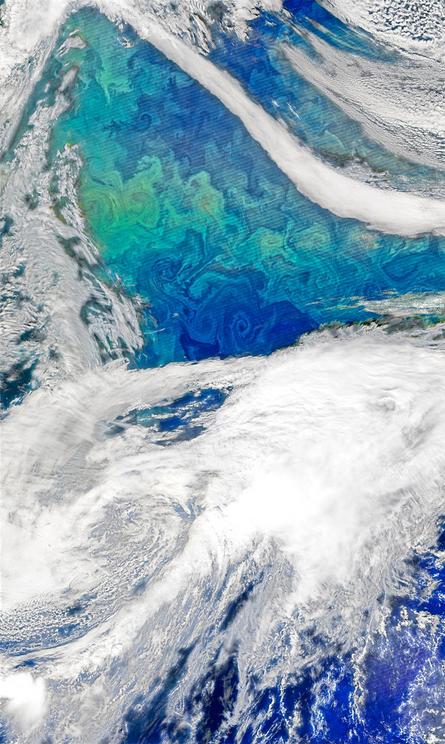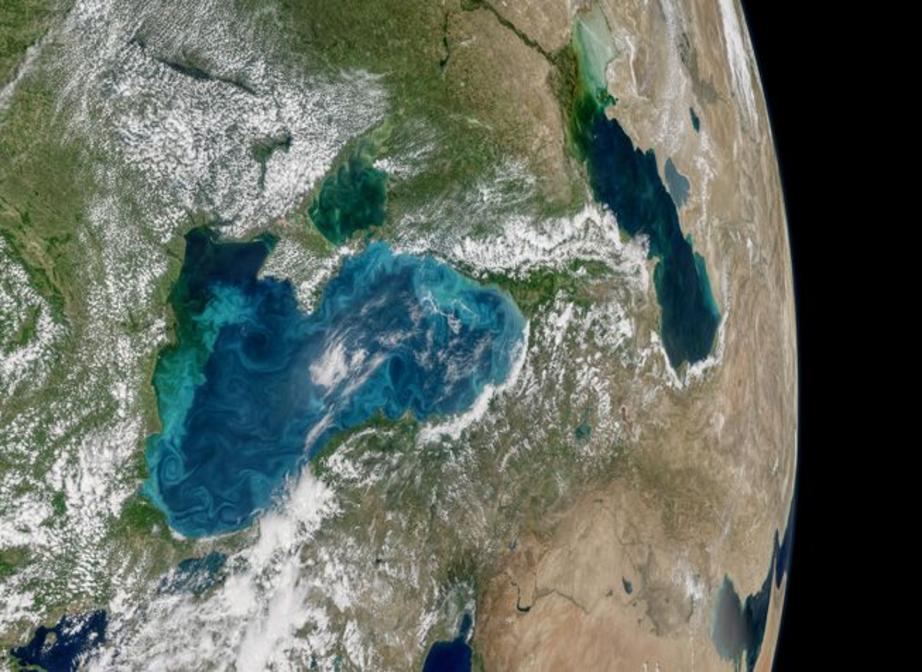NASA releases otherworldly photo of phytoplankton bloom
These tiny organisms can turn water into mesmerizing colors swirls of color.
Like something straight out of "Star Wars," phytoplankton blooms in the Earth's oceans and seas a surreal and sci-fi look.
Phytoplankton, microscopic organisms that live in the warm, sunlit upper layers of the world's oceans, are generally considered the foundation of the oceanic food chain. Each spring and fall the oceans experience what's called a "bloom," the result of a rapid increase in the population of phytoplankton. Thanks to the presence of chlorophyll within their cells, as well as other pigments, these blooms of phytoplankton can change the color of the water's surface.
NASA caught sight of such a bloom, one that is giving the Black Sea from turquoise swirls.
The phytoplankton culprits are likely coccolithophores. When these teeny tiny plankton gather in large numbers, their reflective white calcium carbonate can give the water a "bright, milky" look that's visible even from space.
Of course, not all phytoplankton are the same. According to Norman Kuring, an ocean scientist at NASA's Goddard Space Flight Center, "Diatoms, which also bloom in the Black Sea, tend to darken water more than they brighten it."
Swirls of brightness and blooms of darkness aren't the only options, either. In September 2015, NASA snapped a photo of an Impressionistic plankton bloom in the Atlantic Ocean that was more green than anything else.
NASA's Visible Infrared Imaging Radiometer Suite (VIIRS) on the Suomi NPP satellite was able to take this beautiful shot on Sept. 23.

Phytoplankton blooms occur in both spring and fall, when populations of the micro-organism are at their peak. (Photo: NASA)
"The image does a beautiful job of showing the close link between ocean physics and biology," Michael Behrenfeld, a phytoplankton ecologist at Oregon State University, said in a statement. "The features that jump out so clearly represent the influence of ocean eddies and physical stirring on the concentration of phytoplankton pigments and, possibly, colored dissolved organic matter."
It was rare to see such a bloom at all in the fall. While phytoplankton blooms are active during the fall, they're often hard to see due to "a storm-tossed ship or from a cloud-obstructed satellite," Kuring explained in 2015.

The phytoplankton bloom is making the Black Sea look more like the Turquoise Sea. (Photo: Norman Kuring/NASA's Ocean Biology Processing Group)
For the rest of this article please go to source link below.
